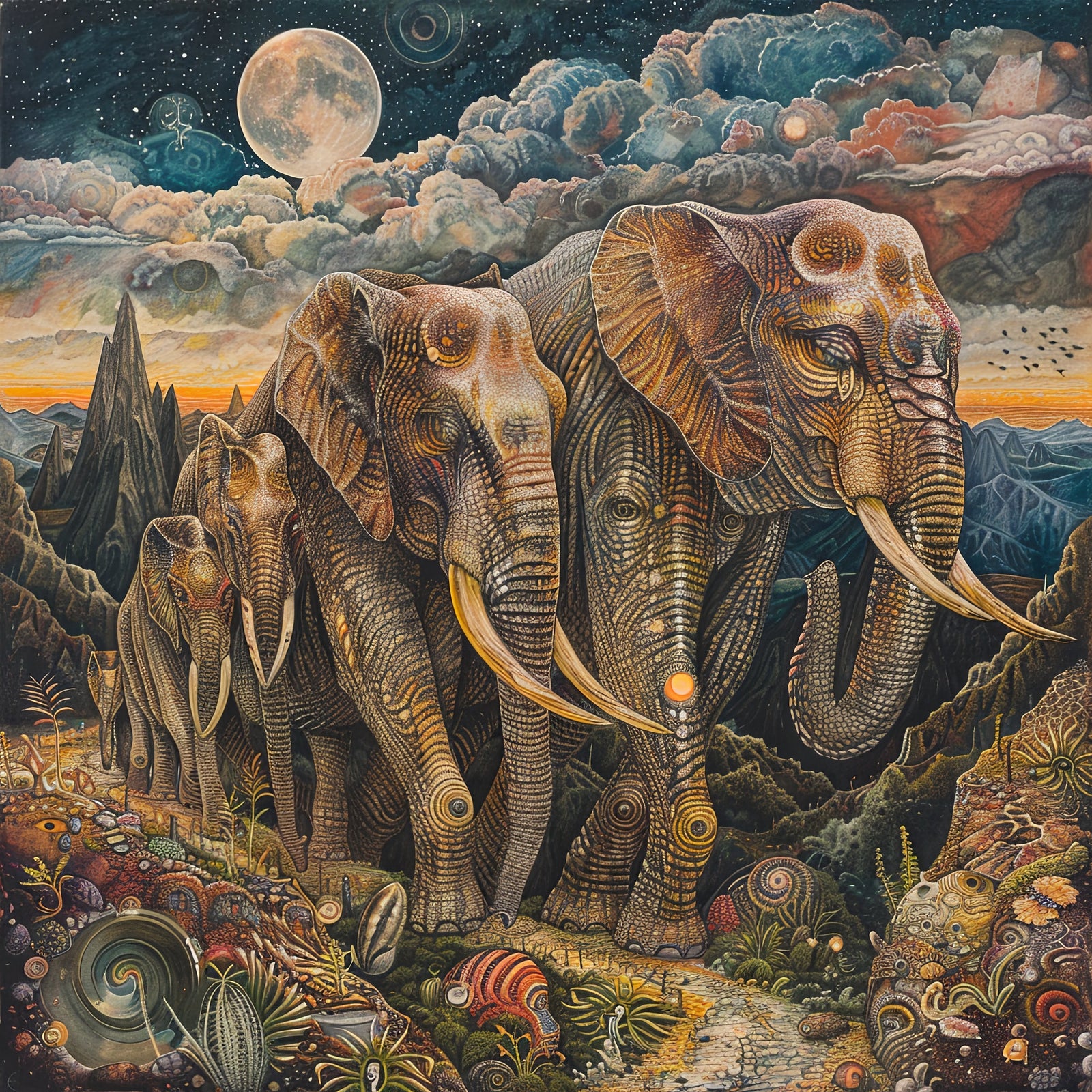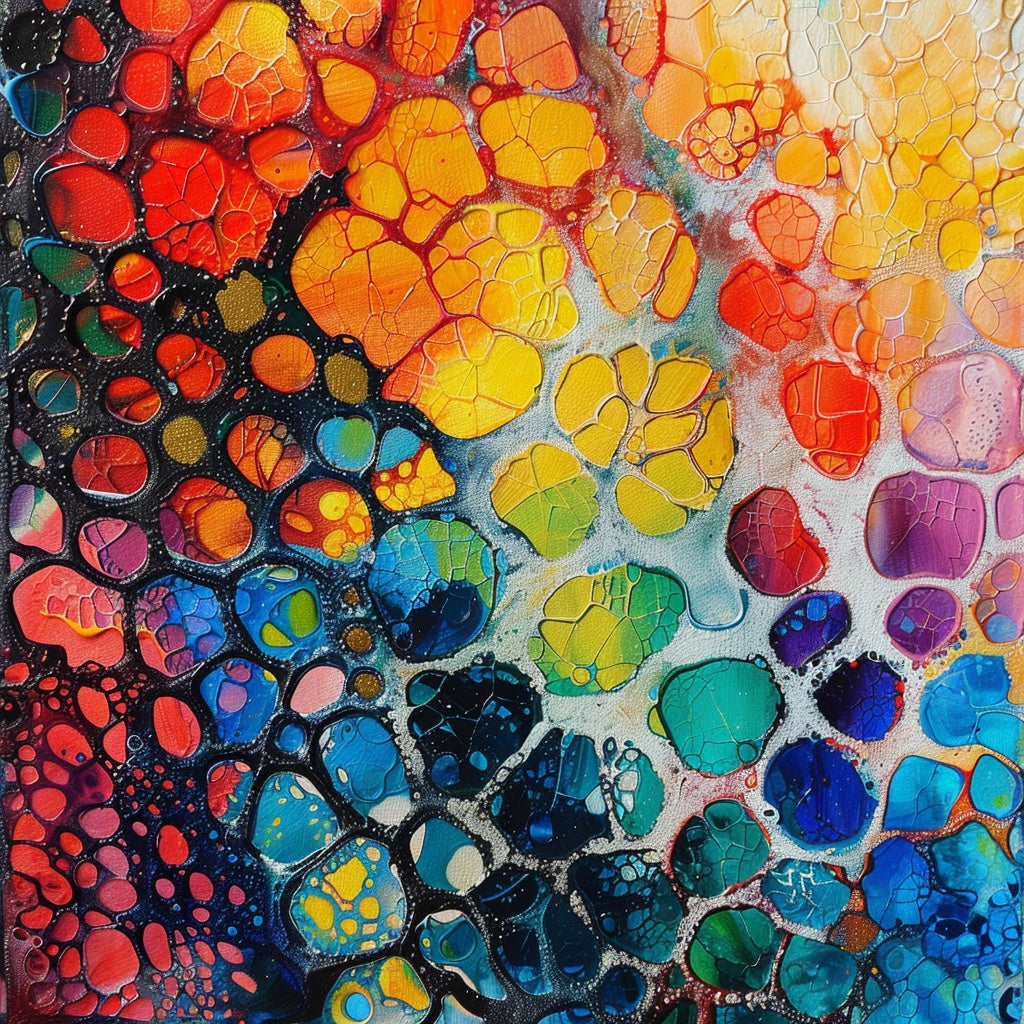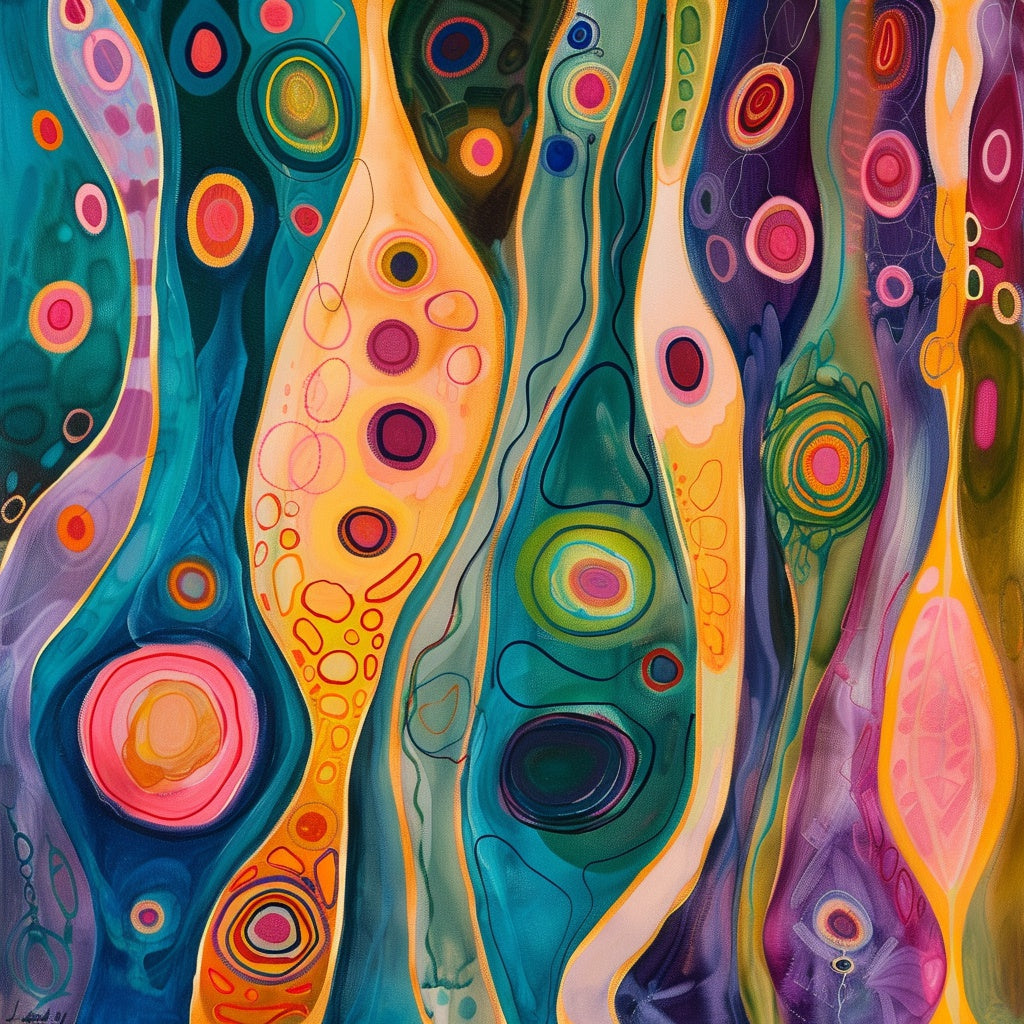AI Art: Is a Personalized Future of Art Upon Us?
The art world has always been shaped by technological progress. From the invention of photography to the rise of digital art, new tools and methods have consistently challenged our traditional views of artistic expression. Now, artificial intelligence (AI) is emerging as the next major disruptor, with AI art generators quickly changing how art is created, experienced, and valued. This article explores the possibility of personalized AI art experiences, examining their advantages, disadvantages, and ethical implications.
Table of Contents
- The Rise of AI in Art
- Potential Benefits of Personalized AI Art
- Potential Drawbacks and Ethical Concerns
- Current Trends in AI Art
- The Future of AI Art
- Ethical Considerations and Conclusion
The Rise of AI in Art
AI art generators use sophisticated algorithms, including neural networks and deep learning, to produce original artworks. These algorithms are trained using extensive existing art datasets, allowing them to learn patterns, styles, and techniques. By analyzing this data, AI can generate new images, paintings, and sculptures that replicate or reinterpret existing styles or create entirely new ones.
One of the most significant effects of AI on art is its potential for personalization. AI algorithms can analyze a person's preferences, behaviors, and emotions to create art tailored to their tastes. This could mean generating images based on their favorite colors, themes, or photographs. For example, imagine an AI that creates a portrait in the style of your favorite artist, using your selfies as a reference. This level of personalization opens up many possibilities for artistic expression and engagement with art.
Potential Benefits of Personalized AI Art
Personalized AI art experiences offer several potential benefits:
Increased Accessibility
AI can democratize art creation, making it accessible to those who may not have the time, resources, or traditional artistic skills to create art themselves. This includes individuals with disabilities, providing new avenues for visually expressing ideas. Imagine a person who cannot use their hands being able to generate an intricate sculpture with a few voice commands or using an AI to create art that converts their inner monologue to a visual output.
Enhanced Creativity
AI can serve as a source of inspiration, helping artists generate new ideas and experiment with different styles and techniques. It's like having an endless supply of potential starting points that a human artist can further manipulate and refine. An AI could provide an artist with preliminary sketches they can choose from and build upon.
Unique and Personalized Artworks
AI can create art that is truly unique and personalized, reflecting an individual's specific preferences and emotions. Instead of buying a print of an existing piece of art, one could have a piece of art created that speaks directly to their personal feelings, memories, or aspirations. This ability to craft personalized artwork could lead to deeper emotional connections with art.
New Forms of Artistic Expression
AI can push the boundaries of artistic expression, creating new forms of art that were previously unimaginable. We could see AI-generated art that combines visual, auditory, and even tactile elements to create multi-sensory experiences. For instance, an AI could generate a piece of art that changes its visual appearance in response to the viewer's heart rate.
Interactive and Immersive Experiences
AI can be used to create interactive art installations that respond to the viewer's movements or emotions, offering a more engaging and immersive experience. Imagine walking through an art gallery where the pieces move, shift, and morph in real-time based on where you are and how you're moving, or a sculpture that changes its appearance based on the ambient temperature. These interactive installations can create a more profound connection between the viewer and the artwork.
Potential Drawbacks and Ethical Concerns
Despite the potential benefits, personalized AI art experiences also raise several concerns.
Authorship and Ownership
One of the main arguments against AI-generated art is that it lacks conscious intent. AI follows algorithms, unlike a human artist who pours their heart and soul into a piece. This raises fundamental questions about what it means to be an artist and whether an AI-generated creation can be considered genuine art.
Using existing artworks to train AI algorithms raises questions about copyright infringement and the ownership of AI-generated art. If an AI generates an image that closely resembles the style of a human artist, does that artist have any claim to the AI-generated work? These issues have not been fully resolved legally, creating a complicated landscape for artists, collectors, and AI developers.
Bias and Representation
AI algorithms can perpetuate biases in the data they are trained on, potentially leading to discriminatory or stereotypical representations. This could worsen existing gender and racial inequities in art by not providing sufficient representation in the algorithm's datasets. For example, if an AI is trained primarily in Western art, it may not be able to generate artworks that reflect the rich diversity of global artistic traditions. The algorithms would then further exclude underrepresented groups, perpetuating a cycle of bias.
Economic Impact
The increasing use of AI in art creation raises concerns about the potential displacement of human artists. As AI becomes more sophisticated, it can create art that is indistinguishable from human-made art, potentially leading to job losses and devaluing human creative skills. This is similar to how the introduction of photography impacted portrait painters in the past. The question is, will AI be just a tool that artists use or a force that replaces them?
Authenticity and Originality
AI-generated art can be easily replicated or altered at scale. Because algorithms can generate variations or new pieces at will, traditional art's uniqueness may be diminished. Unlike an original painting that took a human artist countless hours, an AI could generate a new piece in seconds. This challenges the traditional ideas of artistic value and exclusivity.
The question of authenticity is also significant, as AI art relies heavily on algorithms and pre-existing datasets, potentially diluting its originality. If an AI is trained on a specific artist's work, is the art produced by that AI original or just a sophisticated imitation? This concern is similar to the debates about originality in music, especially sampling, as it blurs the lines between influence and theft.
Environmental Impact
The training of AI algorithms requires significant computational power, which can have a substantial environmental impact due to energy consumption. This means that the more complex and advanced AI art becomes, the greater its carbon footprint could be. This raises concerns about the sustainability of AI art and whether the potential benefits outweigh the environmental costs.
Philosophical Implications
The rise of AI art challenges our very definition of art. If a machine can create something aesthetically pleasing or emotionally evocative, can it be considered art like a human-created work? This calls into question the traditional value placed on human creativity and expression. Is art defined by the medium of expression or the spark of human ingenuity?
AI art also raises questions about the nature of creativity. Is creativity solely a human trait, or can machines be truly creative? If a machine can generate something new and compelling, can it be said to be a creative act? These philosophical questions are at the heart of the AI art debate and will likely be discussed for years.
Current Trends in AI Art
AI art is rapidly evolving, with new trends and techniques emerging constantly. Here are some of the current trends:
- Hyperrealistic Generative Art: AI is creating art with unprecedented realism, blurring the lines between digital and traditional mediums.
- AI-Generated Landscapes: AI can generate realistic or fantastical landscapes, offering new possibilities for environmental art.
- AI-Generated Portraits: AI can create personalized portraits, often blending human features with imaginative elements.
- Immersive and Interactive Art: AI is being combined with virtual and augmented reality to create immersive art experiences.
- AI-Enhanced Animation: AI is streamlining the animation process and introducing new creative possibilities.
- AI-Powered 3D Printing: AI is revolutionizing sculpture and three-dimensional art forms, allowing artists to create intricate and complex structures that were previously impossible to produce by hand.
The Future of AI Art
The future of AI art is uncertain, but AI will continue to play a significant role in shaping artistic expression. As AI algorithms become more sophisticated, we can expect to see even more realistic, personalized, and interactive art experiences. AI-generated images are likely to improve significantly over time, further blurring the lines between human-created and machine-created art.
One potential future development is the creation of AI systems that can truly understand and respond to human emotions. This could lead to AI art that is more emotionally resonant and meaningful. Another possibility is the integration of AI art into everyday life, with AI-generated images and animations becoming commonplace in advertising, entertainment, and even personal spaces. Imagine a world where every wall can be transformed into a dynamic and personalized work of art.
Ethical Considerations and Conclusion
The ethical implications of AI art must be carefully considered as the technology evolves. Issues such as copyright, bias, and the potential displacement of human artists must be addressed to ensure that AI is used responsibly and ethically in art. The potential dangers and risks of AI-generated art, such as producing offensive or dangerous content and devaluing human creativity, must also be acknowledged and mitigated.
Ultimately, whether personalized AI art experiences are the future of art is complex and multifaceted. AI has the potential to revolutionize artistic expression, making it more accessible, personalized, and interactive. However, it is crucial to address the ethical concerns and ensure that AI is used to complement and enhance human creativity rather than replace it entirely. The future of art likely lies in a collaborative approach, where artists and AI work together to create new and innovative forms of artistic expression. This collaboration could involve artists using AI as a tool for inspiration, exploring new styles, or enhancing their existing creative processes.
The rise of AI art also necessitates re-evaluating the definition of art itself. As machines become more adept at creating aesthetically pleasing and emotionally evocative works, we may need to reconsider what constitutes art and how we value different forms of artistic expression. This ongoing dialogue will involve artists, galleries, critics, and the public as we collectively navigate the evolving landscape of art in the age of AI. The debate over AI's role in art is reminiscent of the introduction of computers into fields that humans previously dominated. Just as computers initially caused anxiety among those whose jobs involved complex calculations, AI generates excitement and apprehension within the art world as artists and galleries grapple with its potential impact.
The development and implementation of ethical guidelines will be crucial in ensuring that AI is used responsibly in the art world. These guidelines should address issues such as copyright protection, bias mitigation, and the responsible use of AI-generated content. By fostering a collaborative and ethical approach to AI art, we can harness its potential to enhance human creativity and create a more inclusive and dynamic art world. The key will be to find a balance, ensuring that AI is not used to devalue human creativity but rather as a new tool that can amplify it. The future of art is not about choosing between AI and human artists but about figuring out how they can coexist and create together.
Footnotes
- Art and AI. Thinking about the intersection of… | by Stephanie Kirmer - Medium, accessed January 30, 2025, https://medium.com/@s.kirmer/art-and-ai-c5f5352d8ced
- AI in Art and Creativity: Importance, Benefits, Risk, and Example ..., accessed January 30, 2025, https://www.holisticseo.digital/ai/benefit/art/
- The Great AI Art Debate - AGI Fine Art Blog, accessed January 30, 2025, https://agifineart.com/advice/the-great-ai-art-debate/
- AI's impact on art | News | Illinois Times, accessed January 30, 2025, https://www.illinoistimes.com/news-opinion/ais-impact-on-art-18636332
- Is AI Art Art? - Gini Graham Scott - Medium, accessed January 30, 2025, https://ginigrahamscott.medium.com/is-ai-art-really-art-8ef58315f86c
- AI Art Pros And Cons - Demandwell, accessed January 30, 2025, https://www.demandwell.com/ai-art-pros-and-cons/
- All creatives should know about the ethics of AI-generated images | Lummi, accessed January 30, 2025, https://www.lummi.ai/blog/ethics-of-ai-generated-images
- AI Art: Exploring the Pros, Cons, and Ethical Dimensions - Vision Factory, accessed January 30, 2025, https://www.visionfactory.org/post/ai-art-exploring-the-pros-cons-and-ethical-dimensions
- On “AI” art: the AI's response | The Daily Campus, accessed January 30, 2025, https://dailycampus.com/2023/01/27/on-ai-art-the-ais-response/
- 10 AI Art Trends You Must Know in 2025 | by Christie C. - Generative AI, accessed January 30, 2025, https://generativeai.pub/10-ai-art-trends-you-must-know-in-2025-10e4209dd281
- Future Trends: AI and the Next Decade of Visual Arts - Transforming Creativity and Artistic Expression - PRO EDU, accessed January 30, 2025, https://proedu.com/blogs/photoshop-skills/future-trends-ai-and-the-next-decade-of-visual-arts-transforming-creativity-and-artistic-expression
- www.computer.org, accessed January 30, 2025, https://www.computer.org/publications/tech-news/trends/artists-mad-at-ai/#:~:text=A%20common%20theme%20among%20artists,the%20art%20generator%20tools%20available.
- AiArt: Why Some Artists Are Furious About AI-Produced Art, accessed January 30, 2025, https://www.computer.org/publications/tech-news/trends/artists-mad-at-ai
- The Debate on AI Art vs. Human-Made Fine Art: A Perspective | New Buffalo Art Gallery, accessed January 30, 2025, https://newbuffaloartgallery.com/post/11911-the-debate-on-ai-art-vs-human-made-fine-art-a-perspective
- Local Artists Weigh in on AI Art - Door County Pulse, accessed January 30, 2025, https://doorcountypulse.com/local-artists-weigh-in-on-ai-art/
- Will AI Replace Artists? The Future of Art and Design in the Age of Artificial Intelligence, accessed January 30, 2025, https://www.twothirtymedia.com/ai-replace-artists/
- AI-Generated Art: The Ethical Implications and Debates | by Samuel Shaibu, accessed January 30, 2025, https://becominghuman.ai/ai-generated-art-the-ethical-implications-and-debates-6f0132d158c7



Leave a comment (all fields required)